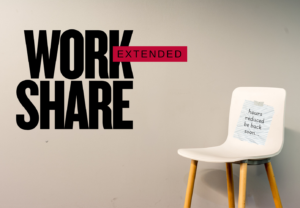
10 Ways HR Managers Can Recruit and Retain Talent to High Living Cost Canadian Cities in 2024
Canadian cities are rated in 2024 among the most expensive for cost of living and quality of living in the world. How can HR Managers help recruit, retain and manage employees in these expensive cities? Among the top lures for talent to high-cost areas are remote work options, flexible work schedules, professional development and childcare support — although there are many other important elements that matter in the competitive Human Resources market.

Quick Stats
- Toronto’s average rent for a one-bedroom apartment reached $2,500 per month in 2024
- Toronto ranked as the 10th most expensive city globally in 2024
- Toronto’s cost of living increased by 5% in 2024 versus the National average of 2.5%
- Vancouver’s food prices increased by 6% in 2024
- Montreal’s utility costs rose by 5% in 2024
- Vancouver’s housing prices rose by 8% in 2024
- Toronto’s job market grew by 2.5% in 2024
- Toronto’s public transportation costs increased by 10% in 2024
- Toronto’s average commute time is 45 minutes
- Toronto’s housing market is expected to grow by 3% in 2024

Top 10 Ways to Attract Top Talent Despite High Living Costs
The Ten initiatives that go beyond simply offering “more money” are proven to attract prospective employees to an expensive location:
- Flexible Work Options: Offer remote work, flexible schedule, or hybrid models to reduce commuting costs.
- Comprehensive Relocation Assistance: Provide moving expenses, temporary housing, and settling-in allowances.
- Professional Development Opportunities: Invest in ongoing education and training programs.
- Health and Wellness Benefits: Include extensive health insurance, gym memberships, and mental health support.
- Work-Life Balance Initiatives: Flexible hours, paid time off, and family-friendly policies.
- Housing Assistance Programs: Provide housing stipends or partnerships with local real estate agencies.
- Transportation Benefits: Offer subsidized public transit passes or parking allowances.
- Childcare Support: Onsite daycare or childcare subsidies can be very attractive.
- Company Culture and Workplace Environment: Create a positive, inclusive, and engaging work atmosphere.
- Retirement and Financial Planning: matching, financial planning services, and stock options.
Outsourcing Helps Manage Resources
As HR Managers grappling with the high cost of living in Canadian cities, outsourcing certain functions can provide a strategic advantage. Outsourcing allows companies to maintain efficiency and quality of work without the financial drain associated with relocations and high local salaries. Why outsource? By diverting internal resources to initiatives that make it “attractive” for employees in high-cost living centers, HR Managers can maximize their recruitment potention.Consider the benefits of outsourcing administrative tasks, IT support, or even specialized roles where remote work is feasible. According to a survey by DSJ Global, many organizations are increasingly exploring outsourcing as a strategic tool to mitigate high operational costs. By outsourcing, you can access a global talent pool, often at a fraction of the cost.
When done correctly, outsourcing can also enhance employee retention. By offloading non-core tasks, you enable your in-house team to focus on their expertise and strategic initiatives, thereby increasing job satisfaction and productivity. This balance is crucial for retaining key talent in a competitive job market.
Quick Facts
- Toronto, Vancouver, and Montreal are among the most expensive cities in Canada for cost of living
- Remote work options can help employees save on commuting and housing costs (National Library of Medicine)
- Flexible work schedules can improve work-life balance and job satisfaction and helps to attract new team members to expensive cities. (National Library of Medicine Abstract)
- Employee wellness programs can enhance retention by addressing stress related to high living costs
- Providing relocation assistance can attract talent from lower-cost regions
- Professional development opportunities can increase employee loyalty and help overcome the issue of higher living costs
- Affordable housing initiatives by employers can support workforce stability
- Childcare support can be a significant benefit in high-cost living areas

Understanding the Cost of Living Challenge in Canadian Cities
Moving to a high-cost city like Toronto or Vancouver can be daunting, especially when employees face skyrocketing housing prices, transportation fares, and daily expenses. It’s essential for HR managers to understand these cost dynamics to support employees effectively.
A comprehensive relocation package can play a pivotal role here. Start by prioritizing essential expenses such as housing and transportation. Consider negotiating temporary housing options to ease the initial burden. This allows employees time to settle in and find suitable long-term accommodation without the pressure of immediate, large up-front costs.
Transportation is another major expense in urban Canadian cities. Offering transit passes or subsidies can significantly lessen the financial strain. Additionally, connecting new hires with local resources and community networks can help them adapt faster and find more cost-effective solutions.
Understanding the differences in living costs between cities is crucial for designing effective packages. A well-researched relocation allowance tailored to specific locations ensures employees are adequately supported without overspending on allowances.
Overall, HR managers need to be proactive and empathetic, providing resources and tools to make the transition smoother while keeping a keen eye on both the company’s budget and employees’ wellbeing.

Flexible Work Arrangements: A Key to Retention
Flexible work arrangements can serve as a lifeline for employees struggling with the high cost of living in Canadian cities — and equally for HR Managers struggling to recruit top talent to expensive locations.
By providing employees the option to work from home or adopt hybrid schedules, companies can alleviate some of the financial burdens associated with commuting and housing.
In addition, remote work opportunities can broaden your talent pool beyond city limits. This means you can access top-tier candidates who may not be willing to relocate but are eager to contribute from afar.
The benefits aren’t solely for the employees. Employers also gain from reduced overhead costs and improved employee morale, which often leads to increased productivity. A satisfied workforce is a productive workforce, and flexible working conditions are a huge step towards employee satisfaction.
It’s essential for HR Managers to communicate the availability and advantages of these flexible arrangements clearly. Tailoring these options to meet individual employee needs can make your company stand out in a competitive job market, even in an expensive city.

Benefits Beyond Salary: Incentives That Work
While competitive salaries are essential, they’re just the beginning of an enticing package. To effectively recruit and retain top talent in expensive Canadian cities, HR managers need to get creative with additional incentives that go beyond mere financial compensation.
One effective approach is to offer relocation packages. These packages often include moving expenses, temporary housing, and even assistance with home-buying or renting. Higher-ranking employees might receive more extensive covered expenses, but extending some support to newer team members can make a significant difference. Tailoring these packages to specific needs while ensuring they comply with IRS regulations can make relocation a smoother transition for all involved.
Another powerful incentive is professional development opportunities. Employees value growth, and providing access to training, certifications, and career advancement programs can be a major draw. This not only benefits the employees but also ensures the company stays competitive with a skilled workforce.
Moreover, wellness programs are increasingly popular. Subsidized gym memberships, mental health resources, and flexible working hours can greatly enhance an employee’s quality of life. These benefits show that the company cares about the overall well-being of its employees, fostering loyalty and satisfaction.
Additionally, consider unique perks like childcare support, which can be especially valuable in cities with high living costs. Whether it’s through on-site facilities or subsidies for external childcare, this kind of support can alleviate significant stress for working parents.
Lastly, offering tax-advantaged benefits such as retirement plans, stock options, or employee achievement awards can provide long-term financial incentives. By reimbursing employees for taxable income in the form of a gross-up, companies can offset tax liabilities, making these perks even more attractive.
By thinking beyond the paycheck and focusing on comprehensive, thoughtful benefits, HR managers can build an enticing package that appeals to top talent, even in the most expensive markets.
Leveraging Technology for Remote Work Opportunities
Advancements in technology have revolutionized the workplace, making remote work more viable and attractive, especially in high-cost cities. As an HR manager, you have the opportunity to leverage these tools to create flexible work environments that can appeal to top talent concerned about the steep cost of living.
Utilizing various collaboration platforms such as Slack, Zoom, and Microsoft Teams can help maintain effective communication and teamwork. Implementing project management software like Asana or Trello can streamline workflow and keep your distributed team on track.
Additionally, consider adopting cloud-based solutions such as Google Workspace or Dropbox for Business to ensure that employees can easily access and share documents from anywhere. These platforms not only support seamless workflow but also foster a sense of inclusivity and unity within remote teams.
Encourage your employees to use these technologies by offering training sessions and resources. This can help them transition smoothly to remote work, enhancing their productivity and satisfaction. Moreover, fostering a tech-savvy culture can make your organization more adaptable and competitive in the ever-evolving job market.
By leveraging the power of technology, you can effectively manage a geographically diverse workforce, reduce overhead costs, and improve employee retention rates, making your organization resilient to the high living costs in Canadian cities.
Retaining Talent Through Career Development Opportunities
Career development opportunities can be the cornerstone of your employee retention strategy, especially in high-cost living areas. When employees see a clear path for advancement, they are more likely to stay committed to your organization. Showing commitment to their growth by offering regular training programs, mentorship opportunities, and clear career progression paths can make a tremendous difference.
Invest in Continuous Learning: One effective way to do this is by investing in continuous learning options. Offering access to courses, certifications, and seminars allows employees to develop new skills that not only benefit them but also enhance their contribution to the company. Many companies have found that supporting employee education leads to higher job satisfaction and retention rates.
Mentorship Programs: Implementing a mentorship program can also yield significant benefits. By pairing less experienced employees with seasoned professionals, you create an environment of mutual growth and support. Mentorship fosters a sense of belonging and engagement, helping new recruits integrate more seamlessly while encouraging experienced staff to take on leadership roles.
Career Path Transparency: Transparency in career progression within the company can be a game-changer. When employees have clear visibility into potential career paths, they are better motivated to strive for their goals. Regularly updating career ladders and conducting performance reviews with constructive feedback offer a roadmap for employees’ professional growth.
Incorporating these elements into your HR strategy can significantly impact your ability to retain top talent, even in cities where high living costs are a challenge. Employees feeling valued and seeing a future with your company are more likely to stick around, thereby maintaining a robust and committed workfåorce.


 Our HR solutions experts can recommend the right mix of HR outsourced services to make your entry into Canada easier.
Our HR solutions experts can recommend the right mix of HR outsourced services to make your entry into Canada easier.  Pivotal Employment Management Services co-hires your workforce, simplifying entry of your business in Canada.
Pivotal Employment Management Services co-hires your workforce, simplifying entry of your business in Canada. 















